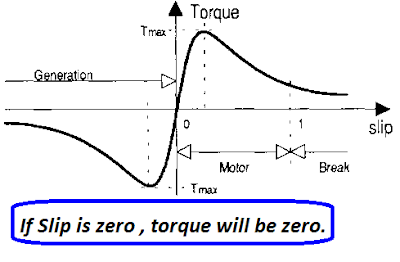A rotating magnetic field is produced when the three-phase supply is fed to the stator. The magnetic field travels the air gap length and cuts the rotor conductor. Voltage is induced in the rotor conductor when the magnetic flux is cut by the rotor conductor. The voltage induced in the rotor conductor can be expressed as;
Er = Slip x Max. Open circuit Rotor Voltage.
If the rotor open circuit voltage is 2000 Volts, the rotor induced voltage will be 2000 at the start because slip is equal to unity. At the start, the rotor conductor cuts the maximum flux and induces a maximum voltage.
When the motor starts accelerating, the slip starts reducing, and as a result, the magnitude and frequency of the rotor-induced voltage start reducing.
What happens if the slip is zero?
If the rotor rotates with the speed equal to the synchronous speed. The flux linkage to the rotor conductors will be zero. The zero flux linkage means the voltage induced in the rotor is zero. The rotor conductors are short-circuited. The zero voltage leads to zero current in the rotor circuit. The torque produced by the motor is ;
T =Flux x Rotor current x Rotor Power Factor
If the Slip is equal to zero, the rotor current is zero, and the torque is zero. The zero torque means the motor will not rotate at all.

Therefore, the slip of an induction motor can’t be zero. The slip can’t be zero in the case of the induction motor. The rotor speed always lags behind the synchronous speed of the motor. That is why the induction motor is called an asynchronous motor. ( Nr< Ns)
1 thought on “Why the Slip never Zero in an Induction Motor?”